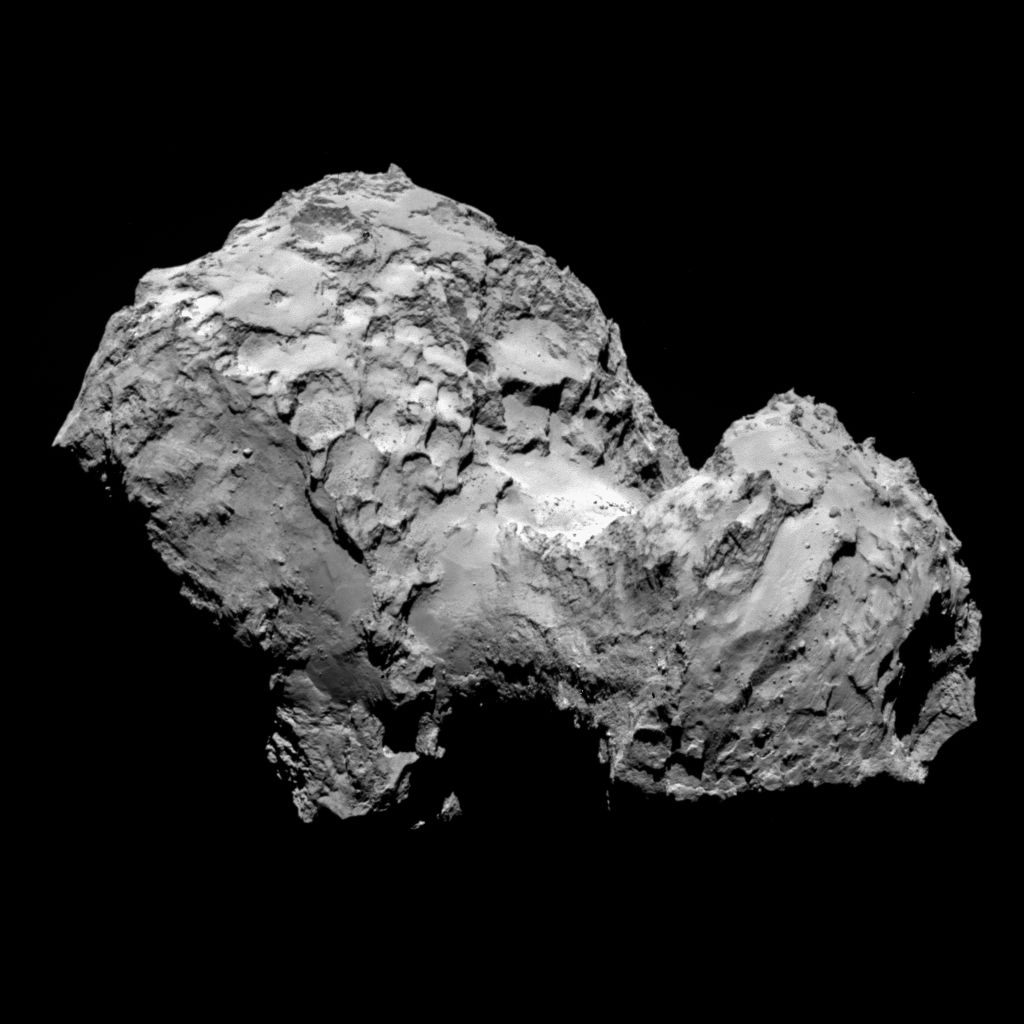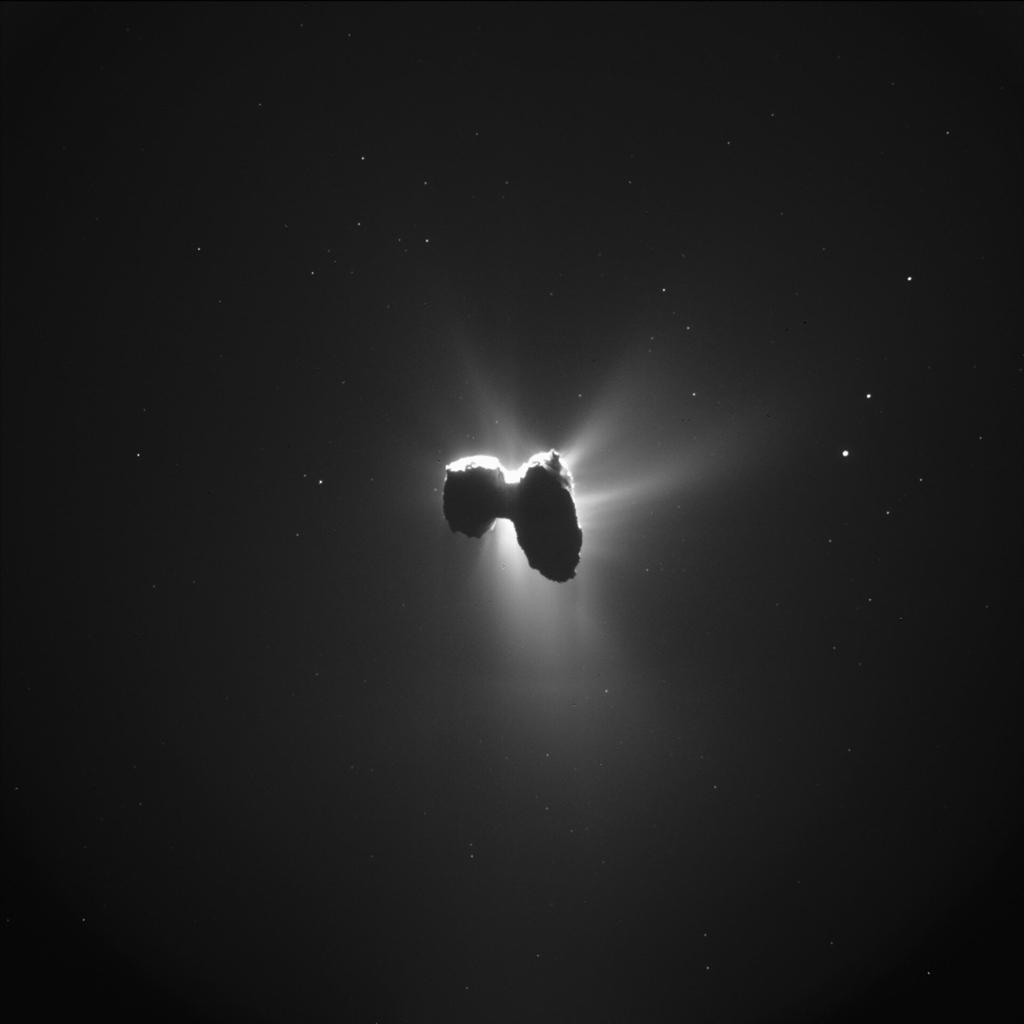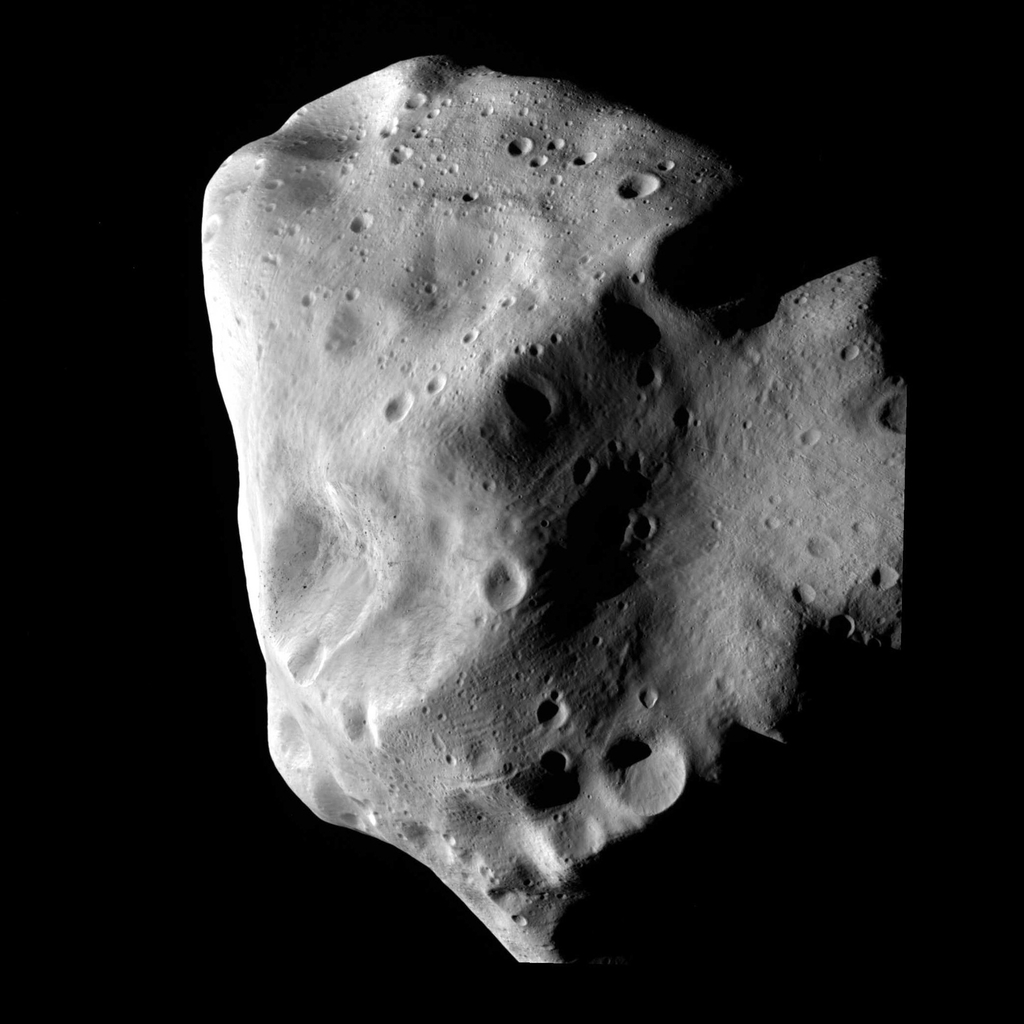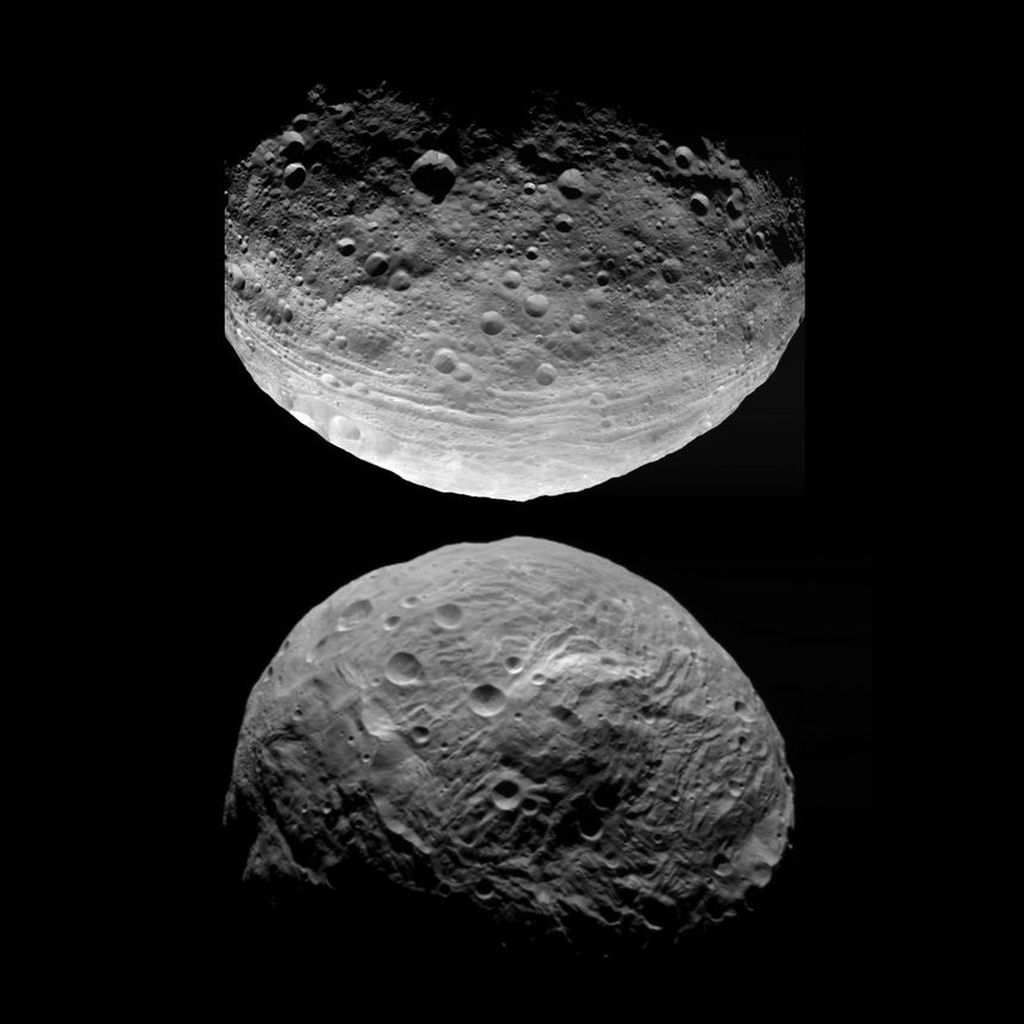Comets
Studying the surface of a comet is challenging as the nucleus is either too far to be resolved in details, or it is close enough but
its own activity hides all the features we would like to investigate.
One of my topic of interest is the localization of active regions on the surface. Although this can be done from a spacecraft, the
jets of gas and dust represent a hazard for any probe passing at close distance from the nucleus and any hint on the local activity
should be taken into consideration to constrain the approach.

Comet 67P/Churyumov-Gerasimenko (© ESA/Rosetta/OSIRIS)

Comet 67P/Churyumov-Gerasimenko (© ESA/Rosetta/NavCam)
Activity drives the evolution of the surface, through the release of gas and dust.
I use observations, analysis, and inversions of dust coma structures to identify regions of particular interest on the surface,
where sublimation and changes take place.
Once these regions are defined, I look at the physical processses involved and attempt to explain them.
By constraining the processes at work now, I build a story of how comets may have evolved since they formed.
This provides important constraints for the models of our early Solar System.
Asteroids
At first, asteroids seem very different from comets: we do not see fast activity driven by gas sublimation. Yet, this does not make asteroidal surfaces boring ! Indeed they can experience large changes on a geological time scale but short-time events such as impacts or landslides happen often and tell us a lot about the physical properties of these small bodies.
My interest lies in the evolutionary processes modifying the surface, and how they relate to the physical and mechanical properties of the material.
Using data from ESA's Rosetta and NASA's Dawn missions I measured and analysed the morphology of craters and landslides, to derive the geological history of the bodies and their gravity fields.

Asteroid (21) Lutetia

Asteroid (4) Vesta (North vs South)
I have applied such analysis to asteroids Lutetia, Vesta, and Ryugu. I am
currently preparing to test new hypotheses on asteroid surface evolution and
cratering physics with NASA's
DART in 2023 and ESA's
Hera in 2027.
Within the NEO-MAPP consortium, supported by the European Commission, I work on new analysis techniques that will enable more efficient missions to Near-Earth asteroids. This is particularly relevant for planetary defence, and future endeavours in asteroid mining. I focus mostly on mapping and shape modeling tasks, with strong emphasis on cameras and laser altimeters.